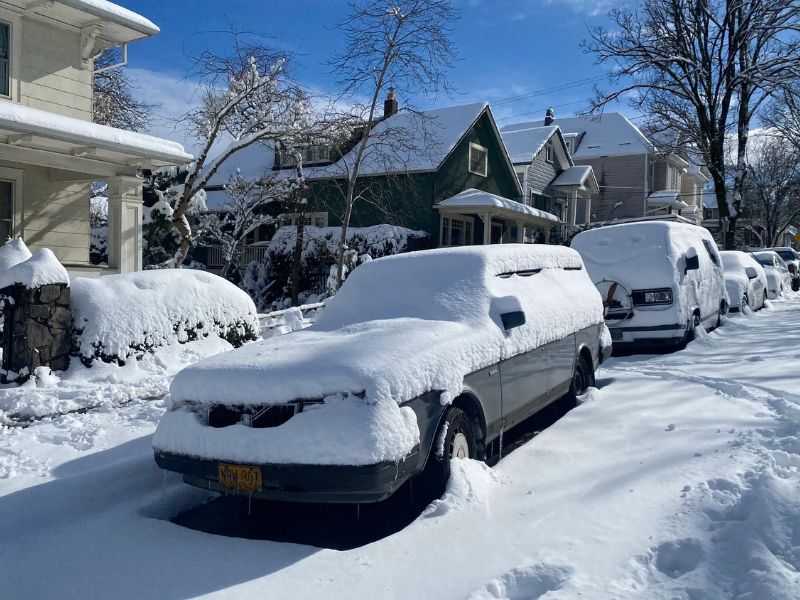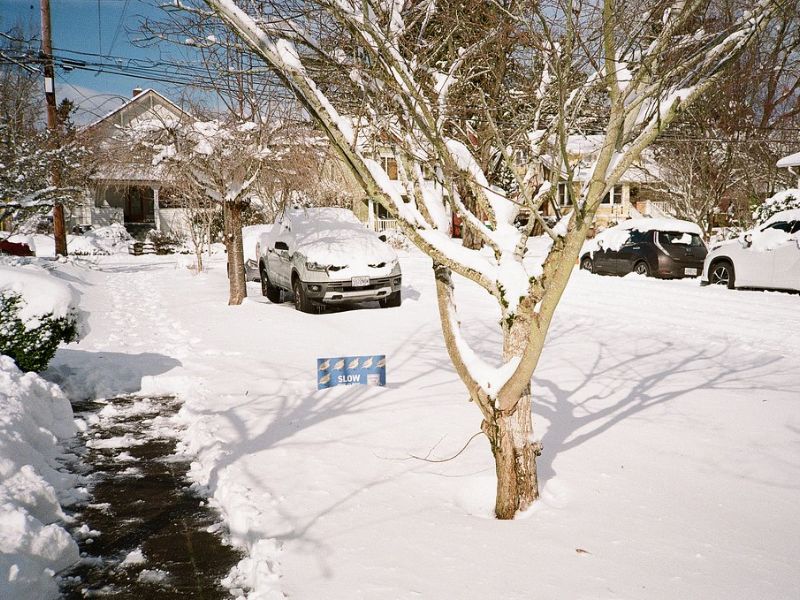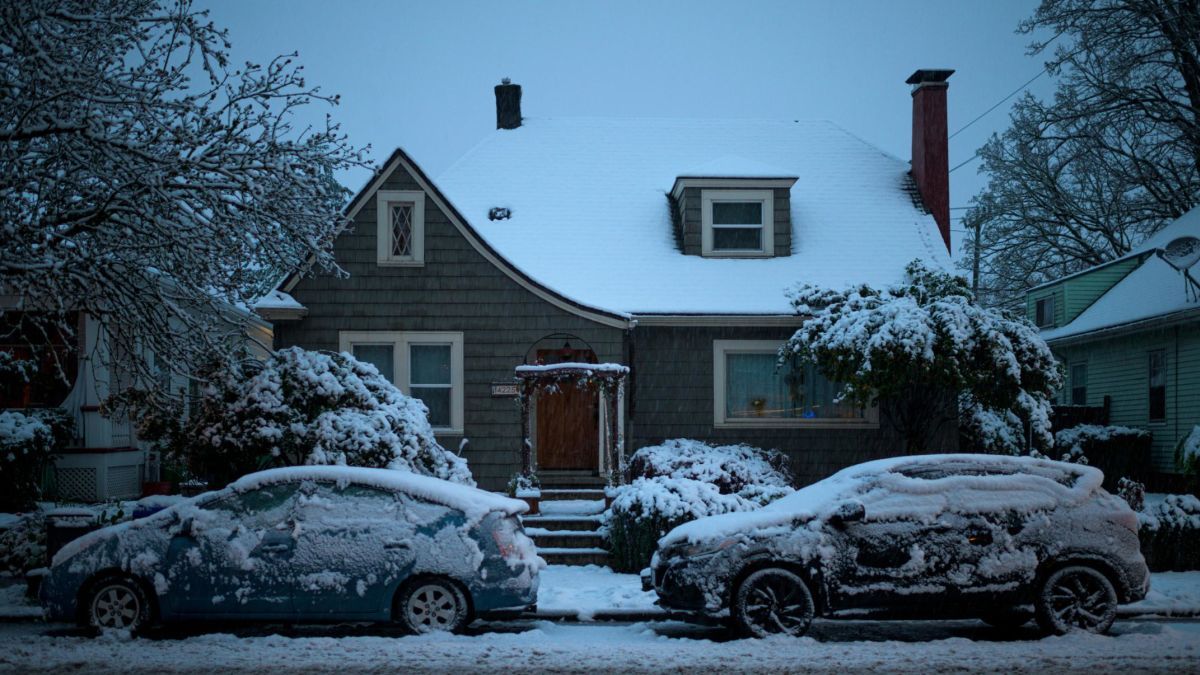Yes, it does snow in Portland, Oregon, but it is relatively rare compared to other cities at similar latitudes. The city’s proximity to the Pacific Ocean and its moderating influence on temperatures play a significant role in the infrequency of snowfall.
Because snowfall is not as common in Portland, the city’s infrastructure and residents may face challenges when dealing with wintry conditions. The occasional snowfall adds a charming touch to the city’s landscapes and often creates picturesque scenes of snow-covered bridges, parks, and neighborhoods.
Overall, while Portland does experience snow, it is not a regular occurrence, and the city’s climate is still best known for its mild, rainy winters and lush green landscapes. Portland is renowned for its lush green landscapes and mild climate, is a city that has captured the hearts of many residents and visitors alike.
However, with its proximity to the Pacific Ocean and being nestled in the Pacific Northwest, one may wonder if Portland experiences snowfall like other northern cities. In this article, we will delve into the climatic conditions of Portland and explore the occurrence of snow in the region.
- Recommended: Does It Snow In Delaware? All About Delaware Climate
Location Overview of Portland
Portland is a vibrant and culturally rich city located in the Pacific Northwest region of the United States. It is the largest city in the state of Oregon and serves as its economic, cultural, and transportation hub.
Situated at the confluence of the Willamette and Columbia rivers, Portland’s strategic location has played a significant role in its historical development and continues to shape its modern identity.
The Willamette River, which flows northward through the city, divides Portland into eastern and western halves. Several bridges span the river, connecting the different neighborhoods and contributing to the city’s iconic skyline.
The city’s transportation system includes a network of highways, public transportation options like buses and light rail (MAX), and an extensive bike lane network. Portland is renowned for its commitment to sustainability and urban planning, making efforts to reduce car dependency and promote alternative modes of transportation.
Portland, Oregon, enjoys a unique location in the Pacific Northwest, surrounded by stunning natural landscapes and influenced by the Willamette and Columbia rivers. Its climate, diverse neighborhoods, progressive culture, and strong emphasis on sustainability make it an attractive place to live and visit.
The city’s strategic location has been vital to its historical growth and continues to play a significant role in shaping its dynamic and thriving community.
Geography and Climate of Portland
The city of Portland is nestled between the Cascade Mountain Range to the east and the Coast Range to the west. These mountain ranges profoundly impact the city’s climate and weather patterns.

Portland experiences a Marine West Coast climate, characterized by relatively mild temperatures throughout the year and significant rainfall during the fall and winter months. Summers are generally dry and pleasant, while winters are damp with occasional snowfall.
The average annual precipitation in Portland is around 36 inches, with most of it occurring between November and April. The Pacific Ocean’s moderating influence keeps temperatures relatively moderate throughout the year but also contributes to the city’s reputation for frequent rain.
Historical Snowfall Record of Portland
Over the years, Portland has experienced varying levels of snowfall, with some winters seeing significant accumulation while others have had little to no snow. Snowfall in Portland is relatively infrequent due to its temperate marine climate, but when it does occur, it can have a notable impact on the city’s daily life and activities.
One of the most memorable snow events in Portland occurred in December 2008 when a powerful winter storm hit the region, resulting in substantial snowfall. During this event, the city received over a foot of snow in some areas, leading to widespread disruptions in transportation, businesses, and schools.
Another noteworthy snowfall occurred in January 2017 when a series of storms brought significant snow accumulation to the city, causing disruptions and closures. During this period, some areas of Portland reported over a foot of snow, which is considered rare for the region.
As with any climate-related data, it’s crucial to refer to the most up-to-date sources for the latest historical snowfall records in Portland, Oregon.
Winter Season & Snowfall Pattern of Portland
Portland experiences a significant shift in weather patterns during the winter months. As the season progresses, temperatures tend to drop, and residents prepare for the possibility of chilly and wet conditions. The winter months in Portland typically run from December to February, with January being the coldest month.
While snowfall is not entirely unheard of in Portland, it is relatively rare compared to other cities at similar latitudes. The city’s proximity to the ocean and its temperate climate means that the conditions for snowfall are not as common as they are in colder, inland regions.
On average, Portland receives about 3 to 5 inches of snow each year. This relatively low amount of snowfall is one of the reasons why the city can experience traffic disruptions and school closures when even a small amount of snow accumulates.
Locations to Enjoy Snow in Portland
While Portland, Oregon, is not known for heavy snowfall, there are still some nearby locations where you can enjoy snow and winter activities during the colder months. These places are within a reasonable driving distance from Portland and offer opportunities for snow sports, scenic winter views, and outdoor adventures.

Here are some locations to consider:
- Mount Hood
Located about an hour’s drive east of Portland, Mount Hood is a popular destination for winter enthusiasts. The mountain offers several ski resorts, including Timberline Lodge and Ski Area, and SkiBowl. Additionally, Timberline Lodge, a historic and iconic building, provides stunning views of the surrounding winter landscape.
- Mount Hood National Forest
Surrounding Mount Hood, the national forest offers various winter recreational activities, such as snowshoeing and cross-country skiing. There are designated snow parks with groomed trails for snowshoers and skiers to explore the beautiful winter scenery.
- Government Camp
This quaint mountain town is located on the slopes of Mount Hood and serves as a hub for winter activities. It offers a range of accommodations, restaurants, and shops, making it a convenient base for exploring the winter wonderland of Mount Hood.
- Hood River
While Hood River is more renowned for its windsurfing and kiteboarding in the warmer months, it also offers opportunities for winter fun. Head to the Hood River Waterfront Park, which sometimes receives snow, and enjoy the views of snow-capped Mount Hood across the Columbia River.
- Trillium Lake
This picturesque lake, located near Mount Hood, offers stunning views of the mountain and is a great spot for snowshoeing and cross-country skiing during the winter. The serene surroundings and snowy landscape make it a popular destination for photographers.
- Columbia River Gorge
The Columbia River Gorge, east of Portland, can see occasional snowfall during the winter months. Driving along the Historic Columbia River Highway or hiking some of the lower-elevation trails can provide breathtaking views of the Gorge and its snow-capped cliffs.
- Timothy Lake
Located in the Mount Hood National Forest, Timothy Lake offers a serene setting for winter activities such as snowshoeing and ice fishing. The area is also popular for camping in the summer, but during the winter, it transforms into a peaceful snowy landscape.
- Santiam Pass and Mount Bachelor
If you are willing to venture a bit further from Portland, Santiam Pass and Mount Bachelor, both located in central Oregon, offer additional skiing and snowboarding opportunities. Mount Bachelor is a larger ski resort with a diverse range of terrain for all skill levels.
Factors Influencing Snowfall in Portland
Several factors influence snowfall in Portland, Oregon. Firstly, its proximity to the Pacific Ocean and its marine climate play a significant role. The moderating effect of the ocean helps keep temperatures relatively mild, making it less likely for snow to occur.
Secondly, the Cascade Mountain Range to the east creates a rain shadow effect, causing the majority of precipitation to fall on the mountain slopes, leaving Portland with less snowfall. Lastly, the city’s low elevation contributes to the infrequent occurrence of snow, as temperatures often stay above freezing during the winter months.
While snow can happen in Portland, these factors collectively result in relatively light and sporadic snowfall compared to other colder regions.
Conclusion
While Portland, Oregon, is not known for heavy snowfall or prolonged winter conditions, it does experience occasional snow events during the colder months. The city’s marine-influenced climate keeps snowfall relatively rare compared to other northern regions.
When it does snow, it often adds a charming touch to the city’s already picturesque landscapes. As climate patterns continue to evolve, Portlanders may see shifts in their winter weather, making it important to stay prepared for any surprises that Mother Nature may have in store.
